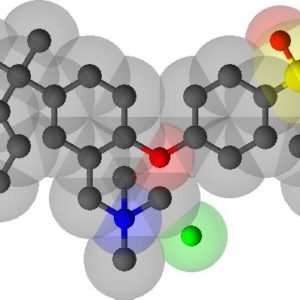Abstract
We describe the three‐step synthesis of a new polymeric fluoride ion conductor based on the fully aromatic polymer polysulfone (PSU). In the first step, PSU is chloromethylated (CM‐PSU) using reagents (i.e., stannic chloride, paraformaldehyde, and trimethylchlorosilane) that are less toxic than those used in the standard procedure. In the second step, CM‐PSU reacts with a tertiary amine (trimethylamine or 1,4‐diazabicyclo[2.2.2]octane) to form quaternary ammonium groups fixed on the PSU backbone and mobile chloride counter‐anions. The chloride ions can, in a third step, be exchanged with fluoride ions by immersion of the ionomer in NaF solution. The fluoride ion conductivity reaches 3–5 mS cm−1 at 25 °C and 5–10 mS cm−1 at 40 °C. We determined the F− diffusion coefficient in these ionomers by pulsed gradient spin‐echo (PGSE) high‐resolution magic angle spinning (HRMAS) nuclear magnetic resonance (NMR) spectroscopy and by impedance spectroscopy using the Nernst–Einstein relation. The diffusion coefficients determined by the two methods are in good agreement, ranging from 2 to 4×10−10 m2 s−1. The porosity and tortuosity of the ionomer membranes can be estimated.
Illustrations
Details
Published on: Chemphyschem 2015, 16, 3631-3636
Authors: L Pasquini, F. Ziarelli, S. Viel, M. L. Di Vona, P. Knauth
